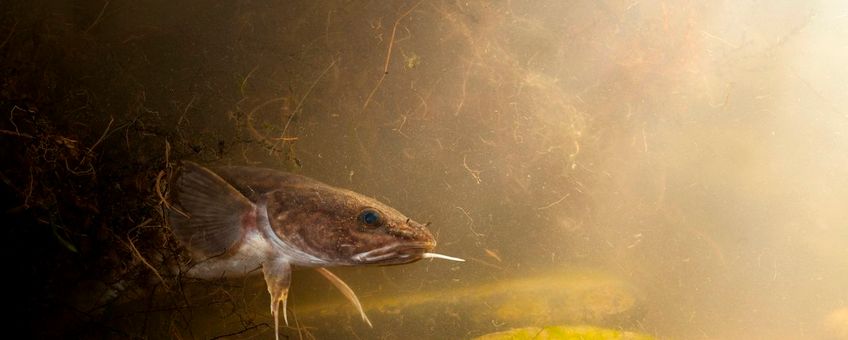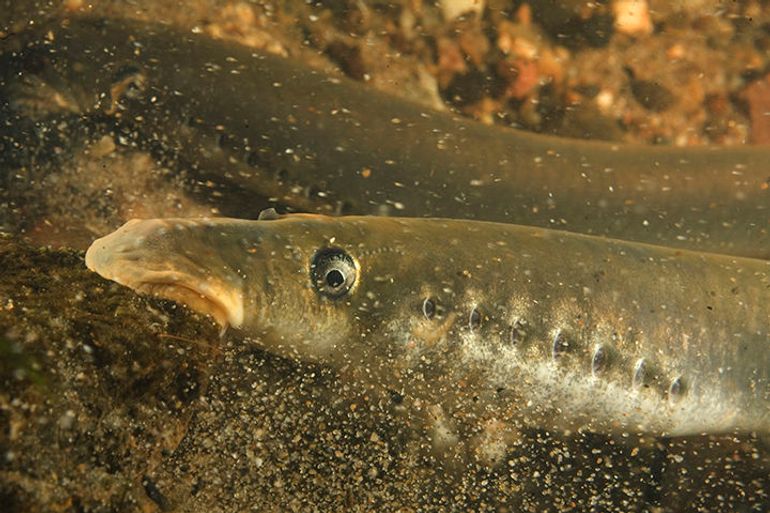
New Red Data List shows slight improvement for freshwater fish in the Netherlands
RAVONThe Dutch Data Red List makes a comparison between the size of the population in the reference situation of 1950 and the current situation. Non-reproducing species (e.g. Eel) were not asessed. The first Red Data List Freshwater Fish was drawn up in 1997 (and revised in 2004). There are five new species on the new Red Data List that reproduce in the Netherlands: Smelt (Osmerus eperlanus) and Bleak (Alburnus alburnus), River Lamprey (Lampetra fluviatilis), Sea Lamprey (Petromyzon marinus) and Brook Lamprey (Cottus rhenanus). The Brook Lamprey has recently been established as a separate species. Two species no longer on the Red Data List are Rhodeus amarus and Leucaspius delineatus; they have increased, and also, as a result of better identification methods, seem to be much more widespread than previously thought.

A comparison between the reconstructed Red Data List from 1997 and the new Red Data List shows that four species are less threatened, and three more threatened. The number of species with the status endangered or extinct in the Netherlands has declined (see chart). This indicates that measures carried out in recent decades, such as the improvement of water quality and brook restoration, are starting to pay off. Further, remedial action is needed to get the fish community back to the level of the reference situation.
Bottlenecks

The fish species on the Red Data List are especially vulnerable during the egg and juvenile stages. A major bottleneck for the Twaite Shad (Alosa fallax), the breeding population of which has disappeared from the Netherlands, is the absence of suitable breeding sites in the freshwater tidal zone. These areas were originally upstream of the Biesbosch area; they too have disappeared due to the construction of the dam across the Haringvliet. The now critically endangered Burbot (Lota lota) needs shallow flood plains for the young fish to grow to adulthood. The natural fluctuations in water level have largely disappeared along rivers and polder waters, and with them, the shallows needed for the fish to complete their life cycle. This has also led to the vulnerable status of European Weather Loach (Misgurnus fossilis) and the Crucian Carp (Carassius carassius). Many of the species with the status near threatened or vulnerable on the Red Data List are highly dependent on flowing water (European Brook Lamprey (Lampetra planeri), Rhine Sculpin (Cottus rhenanus), Atlantic Trout (Salmo trutta morpha fario), Minnow (Phoxinus phoxinus), Dace (Leuciscus leuciscus), Chub (Squalius cephalus) Barbel (Barbus barbus), Nase (Chondrostoma nasus), Bleak (Alburnus alburnus), Bullhead (Cottus perifretum), European River Lamprey (Lampetra fluviatilis), Sea Lamprey (Petromyzon marinus), Terek Nase (Coregonus oxyrinchus). They have relatively high demands concerning the water quality and hydro-morphology of river and stream systems; the straightening of water courses and construction of barriers, such as sluices or dams, has seriously affected them. The disappearance of shallow, fast-flowing breeding areas with coarse soil substrate is a major bottleneck for these species.
More information
- Download Red List (in Dutch)
- Download RAVON Report Red List for freshwater fish (in Dutch)
Text: Jan Kranenbarg & Raymond Creemers, RAVON
Photos: Jelger Herder (leadfoto: Burbot (Lota lota)); Blikonderwater.nl
